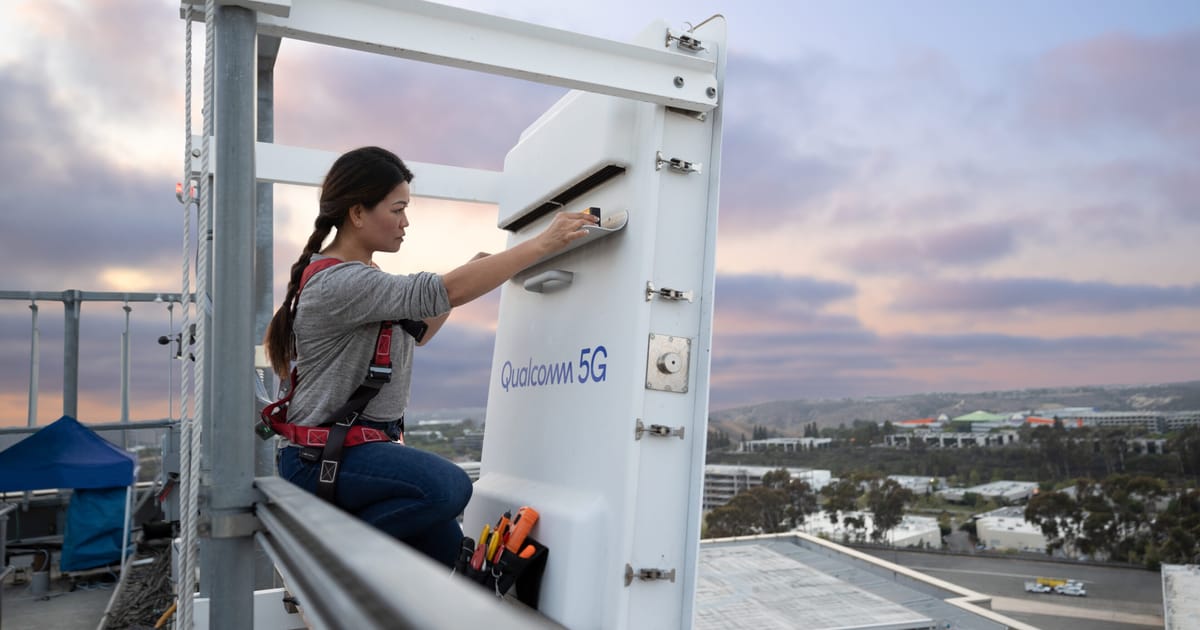
Competitive markets and strong partnerships have always encouraged companies to innovate. Policies promoting such an environment allow for more inventions and creations within national, regional and international markets.
The EU leads the world in understanding the broad, interlinked forces driving technology innovation in the digital sector. The approval and enforcement of the Digital Markets Act (DMA) exemplify this leadership and are critical to preserving an open digital ecosystem.
The development of communications network infrastructure is another important area that can spur innovation. The EU has recognized the need to incentivize investment in digital infrastructure through ‘virtuous circles’ to bring reliable and secure connectivity. The physical network sits at the core of the digital ecosystem, but is also at the heart of our economies and societies.
Moreover, the EU has focused on the strategic value of semiconductors as engines of the digital transition that foster Europe’s competitiveness. The EU Chips Act has highlighted the need for a geo-diversified production and coordinated strategy amongst countries to balance global dynamics, security needs and supply priorities.
Fostering talent
In addition to the regulatory environment, it is important to nurture the human ingenuity that drives technology by strengthening partnerships that bring people and companies together.
Successful partnerships that lead to cutting-edge innovations are built on the individual human connections that spark new ideas. Talent is the most valuable resource for today’s knowledge-based economy. Promoting participation in science, technology, engineering, and mathematics (STEM) disciplines to create the skilled workforce necessary for the global digital economy is essential. Qualcomm collaborates with community stakeholders on several programs across Europe that reach and inspire students from all backgrounds.
Furthermore, local innovation hubs have a paramount role in attracting, retaining and developing talent. With this in mind, Qualcomm established a 5G/6G R&D centre in Lannion, France, and an Artificial Intelligence (AI) R&D lab in Amsterdam, the Netherlands, doing fundamental research to fuel the connected intelligent edge with innovation.
Successful partnerships that lead to cutting-edge innovations are built on the individual human connections that spark new ideas.
Transforming through partnerships
Partnerships to develop and apply advanced technologies are decisive in unlocking access to future innovations and use cases, such as leveraging the metaverse for industrial and learning applications. Europe is an epicenter of technology R&D leadership — and our labs in Austria, Finland, France, Germany, Ireland, the Netherlands and Spain are integral to our ability to engage in such partnerships.
From operators to automotive and industrial players, Qualcomm’s partnerships with European companies are good examples of how shared digital value can be created across an expanding range of verticals – by combining complementary technologies and expertise.
The automotive sector is a prime example. Digital transformation is a priority for automakers as vehicles become connected computers on wheels. Qualcomm’s digital chassis high-performance solutions empower automakers to add a full suite of technology to create software-defined intelligent vehicles that are highly customizable and upgradeable. This flexibility enables the adoption of a wider array of powerful automotive platforms, while allowing automakers to keep the relation with their customers and shape the in-vehicle digital experience.
Europe is an epicenter of technology R&D leadership — and our labs in Austria, Finland, France, Germany, Ireland, the Netherlands and Spain are integral to our ability to engage in partnerships.
Protecting innovative ideas
As companies like Qualcomm drive cycles of innovation and creativity, it is important to have a strong intellectual property regime that protects the ideas that emerge. One key area that relies on such protections are communications standards like 5G. Standards are the foundation of the digital ecosystem. They also are crucial to competition, helping new entrants compete with existing players.
Today’s 5G standard is a direct descendant of a European initiative back in the 1980s that pushed for a single mobile standard to enable the single market. Europe’s strong patent rights were critical to its early leadership in mobile standards. These rights have given innovative companies the necessary incentives to invest in research and development and to contribute their intellectual property (IP) to the standards. Without these incentives, innovation within the ecosystem would stagnate.
This year, the European Commission will tackle files that will impact standards development – including the IP that fuels the necessary ongoing innovation. It is our hope that their importance to the digital ecosystem continues to be championed.
Qualcomm is a partner to Europe in achieving its digital transformation through talent development, transformative partnerships, and continuous innovation.
Building a future vision
All stakeholders have a role to play in incentivizing a vibrant digital ecosystem. By keeping a holistic view of all aspects that support a healthy digital ecosystem, Europe is bound for success.
This success can be further bolstered by the joint EU-US continuous dialogue. We hope the Trade and Technology Council (TTC) will be a vehicle for the EU-US cooperation to address new and emerging global tech and trade challenges. The TTC could serve as a focal point to increase trust and understanding to enable innovation, encourage investments and foster competition. Global leadership can only be achieved through policy cooperation and market-led approaches.
Qualcomm is a partner to Europe in achieving its digital transformation through talent development, transformative partnerships, and continuous innovation. Our connected future depends on it.




